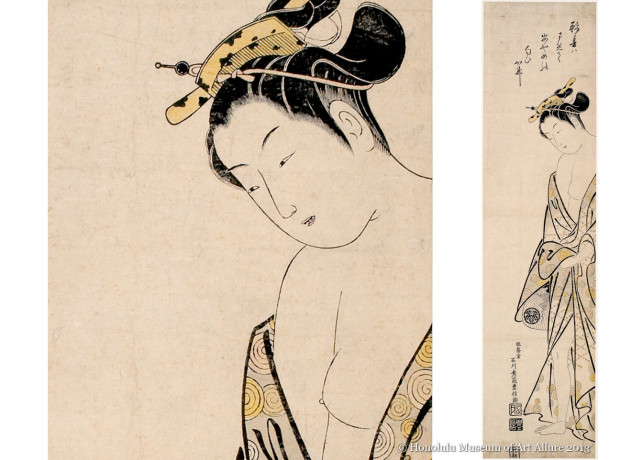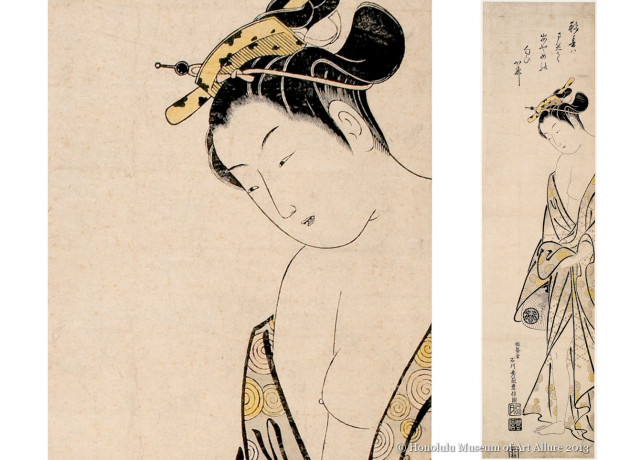Ishikawa Toyonobu (1711-1785)
After the Bath
Japan, Edo period, early 1750s
Hand-colored woodblock print; ink and color on paper
Gift of James A. Michener, 1971
Honolulu Museum of Art
(16086)
Toyonobu was especially well known for his depictions of women in déshabillé. Courtesans of the time (of which she is likely an example) were renowned for a distinctive walk in which they would flick the hem of their garments to give a glimpse of their calves, driving their admirers to distraction. Here, though, Toyonobu has not depicted such an intentional public display, but rather captured the woman in a private moment after meeting with her lover:
His lingering scent
Fades into
The fragrance of iris.
(translation by Robert Huey)
The voyeurism of the image is heightened by the hashira-e or “pillar picture” format, which provides a long, narrow vertical framing, as if the viewer is spying upon her from a limited vantage point.
In her hand, the woman holds a fan with the crest of the actor Ichimura Kamezō I. Like high-ranking courtesans, Kabuki actors were celebrities, and incorporating their crests into one’s dress was a conspicuous fashion statement.
View info on museum database (enabled through support by the Robert F. Lange Foundation)


